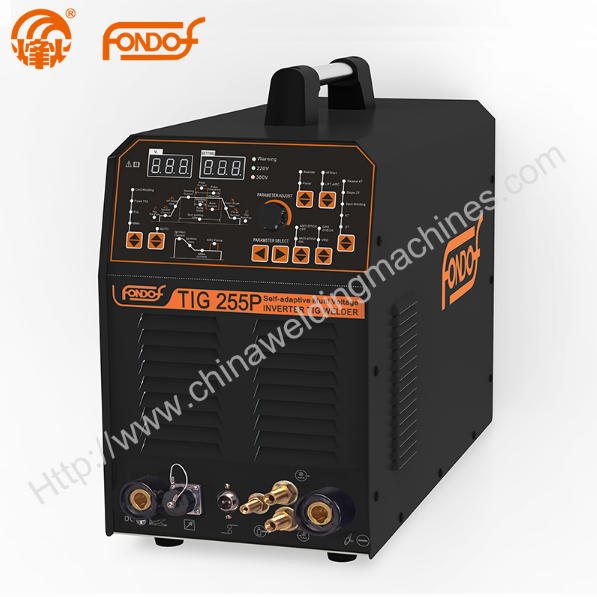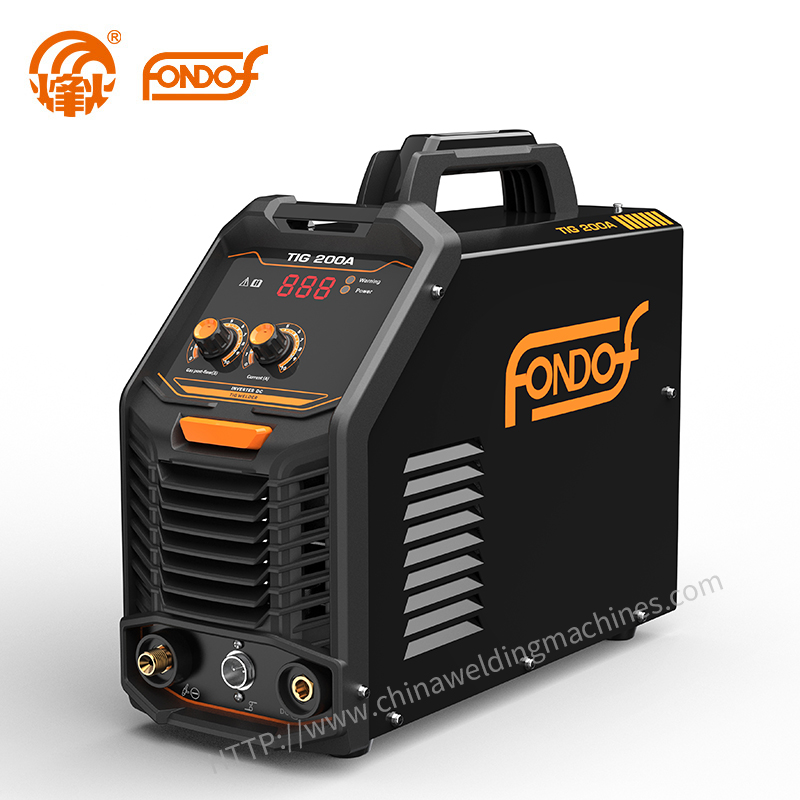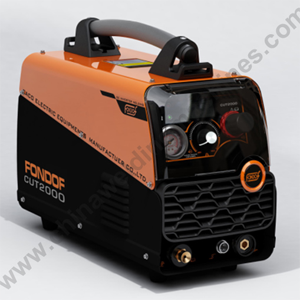Understanding Pulsed TIG Welding - Guide
 Jul. 05, 2024
Jul. 05, 2024
If you're eager to enhance your welding prowess, pulsed TIG welding offers a technique worth mastering. This method achieves deeper penetration with reduced heat input, resulting in flawless, smooth welds that penetrate deeply, even on thin gauge materials, without risk of burn-through.
What is Pulsed TIG?
Pulsed TIG welding is an advanced TIG process that utilizes a sophisticated heat input control mechanism to achieve superior weld quality. By allowing welders to regulate the TIG welder's amperage output through settings for maximum and minimum amperage, and the frequency of alternation between the two, this technique generates a pulsed waveform rather than a continuous electrical current—hence its name, "pulsed TIG."
This method is particularly advantageous for welding thin gauge materials like sheet metal and base metal. It is widely used for welding aluminum and stainless steel, notably 304 stainless steel. In pulsed TIG welding, the operator still controls the amperage output using a foot pedal, but the output from the TIG torch is a pulsating waveform rather than a steady current.
Compared to traditional TIG welding, pulsed TIG offers several benefits. It enhances weld penetration while minimizing heat input, resulting in cleaner and more precise welds. This process also reduces the risk of burn-through and distortion, making it especially suitable for welding thin gauge materials.
In essence, pulsed TIG welding is an effective method that employs pulse welding to achieve high-quality welds. Its ability to enhance weld penetration while reducing heat input makes it ideal for applications involving thin gauge materials, such as sheet metal and base metal, as well as aluminum and stainless steel.
How Pulsed TIG Works?
Pulsed TIG welding operates by alternating between high and low electric currents to effectively join metals. This technique improves weld penetration while minimizing overall heat applied to the metal, resulting in higher quality welds with reduced heat damage. To utilize this method effectively, several key settings must be adjusted: peak amperage (the highest current during a pulse), background amperage (the lowest current), pulse width (duration of the peak current), and pulse frequency (number of pulses per second).
These adjustments are critical and depend on factors such as material type, thickness, welding speed, desired weld appearance, and welding position. Pulsed TIG welding is particularly advantageous for stainless steel, enhancing efficiency and lowering welding costs. Selecting the appropriate settings for peak and background amperage, pulse frequency, and pulse width ensures optimal welding performance based on the specific welding requirements.

Advantages of Pulsed TIG Welding
TIG welder with pulse stands out as a versatile process offering numerous advantages over traditional TIG welding. Here, we delve into some of the key benefits of pulsed TIG welding.
Improved Heat Input Control
One of the most significant advantages of pulsed TIG welding is the enhanced control over heat input. Welding thin materials can be challenging due to the risk of warping and distortion. Pulsed TIG welding allows for more precise management of heat input by adjusting parameters such as peak amperage, background amperage, pulse width, and frequency of pulse transitions. By reducing the duration of peak pulse currents and increasing pulse frequency, heat input can be significantly reduced. This improves heat management, minimizing the likelihood of distortion, discoloration, or loss of corrosion resistance in thin gauges. Higher pulse frequencies narrow the heat-affected zone, directing more heat into the joint and less into the surrounding metal.
Improved Penetration and Travel Speed
Pulsed TIG welding enhances weld penetration and travel speed. Higher pulse frequencies constrict the arc, increasing weld penetration into thick materials. Adjusting pulse settings, such as maintaining background amps around 50% of peak amperage, optimizes penetration depth based on material and thickness. Moreover, higher pulse frequencies enable faster welding speeds, beneficial for both thick and thin metals like chromoly.
Out-Of-Position Welding
Pulsed TIG welding excels in out-of-position welding scenarios where gravity can affect weld puddle stability. Adjusting pulse parameters to lower peak amperage duration prevents excessive puddle fluidity, maintaining weld integrity. Experimenting with higher pulse settings and lower peak amperages further enhances penetration without overly liquefying the weld puddle, depending on the metal type.
These advantages make pulsed TIG welding a preferred choice for achieving precise, high-quality welds across a variety of materials and welding conditions.
Improved Weld Quality
Pulsed TIG welding machine enhances weld quality through unique features like the ripple effect in the weld puddle, known as weld agitation. This effect disrupts surface tension, preventing contaminants from becoming trapped under the weld and ensuring more even joint filling. Industrial welding processes commonly utilize weld agitation, making it valuable to replicate with an inverter TIG welder.
Enhanced Weld Appearance
Pulsed TIG welding is renowned for producing visually appealing welds, often seen showcased on welders' Instagram profiles. The pulsing action facilitates achieving a stacked dimes weld pattern with ease. As the amperage alternates, the arc dims and brightens, providing a clear rhythm for adding filler metal precisely. Additionally, using lower amperage and high pulse settings allows for smoothing out weld faces without additional filler metal, reducing post-weld surface preparation time.
Welding Near Edges or Holes
Pulsed TIG welding simplifies welding near edges or holes by reducing average heat input through pulsing. This feature helps maintain edge integrity and facilitates welding thinner materials effectively, which can be challenging with standard TIG welding processes.
In summary, pulsed TIG welding offers significant advantages that enhance welding productivity, reduce costs, and elevate weld quality. By refining heat input control, improving penetration, increasing travel speed, and enhancing weld aesthetics, pulsed TIG welding enables superior results in less time.
Conclusion
Mastering Pulsed TIG weldier involves fine-tuning pulse settings through experience and trial. Higher pulse frequencies create a focused arc with deep penetration, while minimizing the difference between high and low amperage reduces heat input and enhances penetration. This technique significantly improves welding speed, penetration depth, and weld aesthetics while mitigating heat effects. When pulse settings are optimized, you achieve optimal penetration with controlled heat input. With dedication and meticulous attention, mastering Pulsed TIG welding allows you to consistently achieve superior welding results.
Frequently Asked Questions
What are the benefits of using pulse TIG welding over traditional TIG welding?
Pulse TIG welder provides several benefits over traditional TIG welding, such as:
Improved weld quality
Reduced heat input
Better control over the weld puddle
Reduced distortion
Better penetration
Reduced spatter
Ability to weld thin materials
How do you adjust pulse settings for optimal TIG welding performance?
To adjust pulse settings for optimal TIG welding performance, you need to consider the following factors:
Material type and thickness
Joint type
Welding position
Welding speed
Welding current
AC balance
Pulse frequency
Pulse width
Peak amperage
Background amperage
Can pulse TIG welding effectively weld aluminum?
Yes, pulse TIG welding can effectively weld aluminum, albeit with a distinct approach compared to other materials. Aluminum welding demands a higher frequency and lower peak amperage to avoid burn-through.
What is AC balance in TIG welding and its impact on outcomes?
AC balance in TIG welding refers to the ratio of time the electrode spends positive versus negative. It crucially influences welding by controlling cleaning and penetration. A higher AC balance enhances cleaning, whereas a lower balance increases penetration during welding.
What common issues should I look out for when pulse TIG welding?
Common issues that you should look out for when pulse TIG welding include:
Burn-through
Porosity
Incomplete fusion
Cracking
Warping
Tungsten contamination
Poor bead appearance
How does high frequency affect pulse TIG welding processes?
High frequency affects pulse TIG welding processes by ionizing the air between the electrode and the workpiece, which creates a stable arc and prevents arc wandering. It also helps to initiate the arc and maintain arc stability at low amperages. However, too high of a frequency can cause interference with electronics and radio equipment.




























